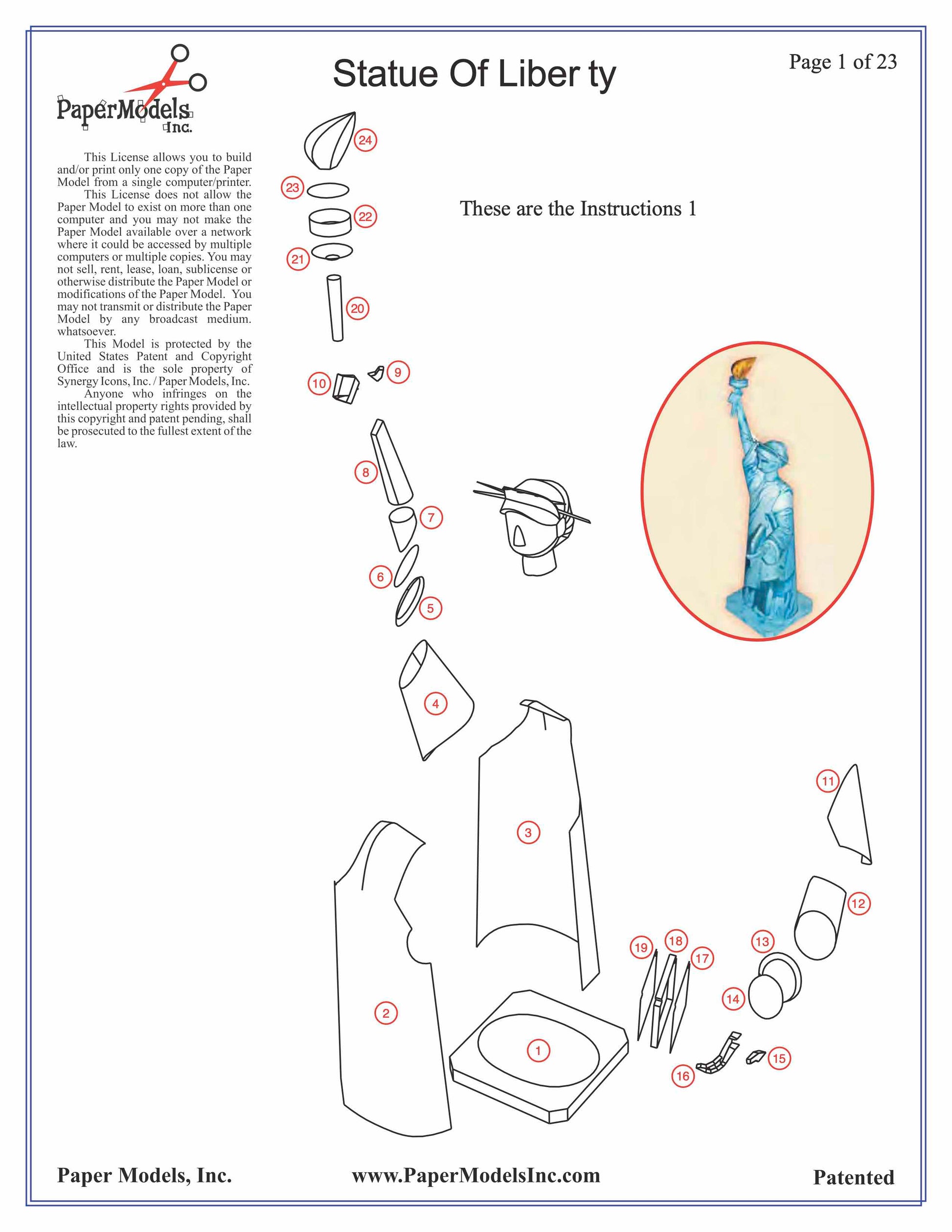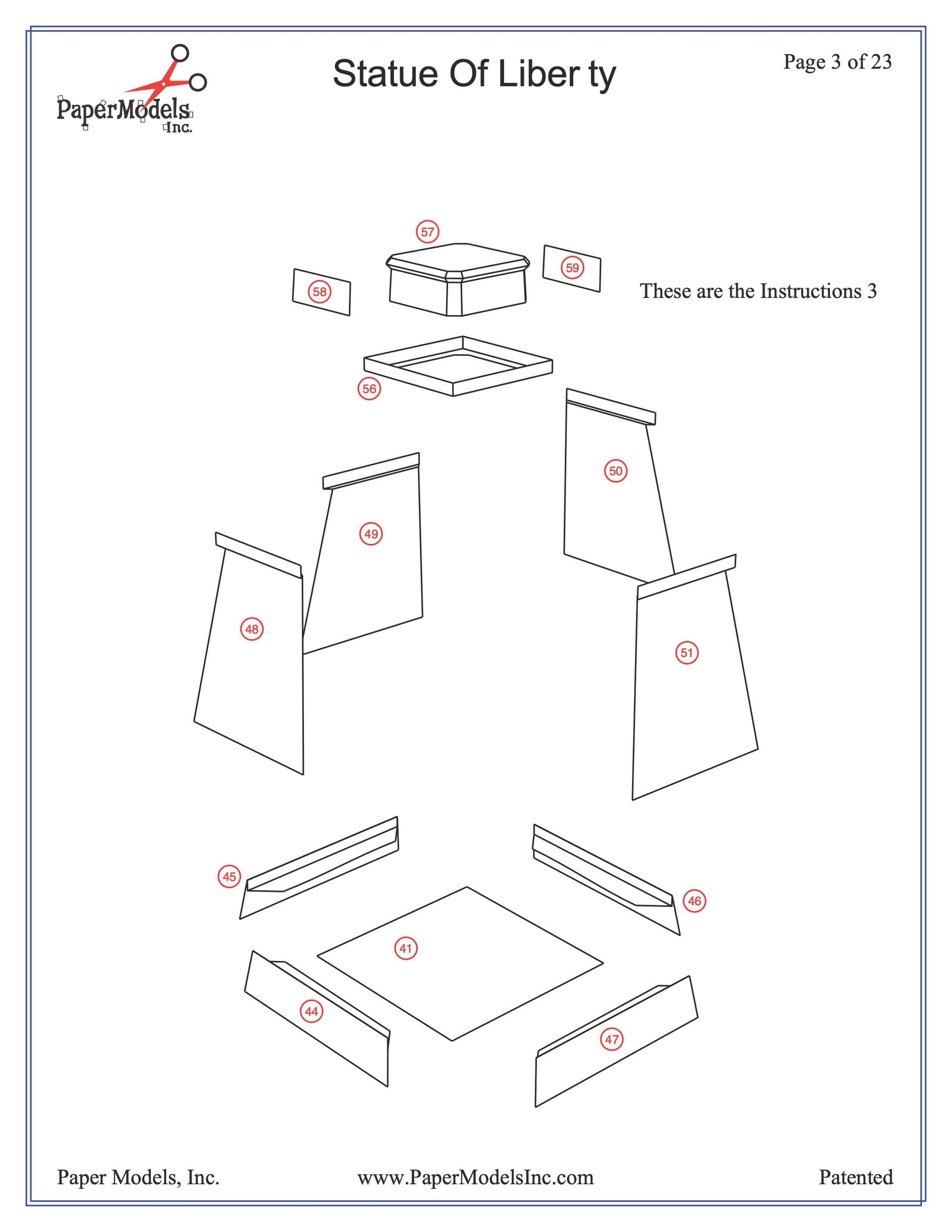Statue of Liberty - New York Harbor - Paper Model Project Kit
Statue of Liberty - New York Harbor - Paper Model Project Kit
No se pudo cargar la disponibilidad de retiro
🌟 Welcome to Paper Models Online – Your Shortcut to Academic Excellence! 🌟
Are you tired of stressing over last-minute school projects? Look no further! Paper Models Online is here to make your academic life a breeze.
🚀 Why Choose Us?
At Paper Models Online, we understand the pressure of looming deadlines and the desire for that coveted "A" grade. That's why we've crafted the perfect solution for you! Whether you're a student aiming for extra credit, a parent looking for quality time with your kids, or just someone in need of a break from the chaos, our paper models are your ticket to success!
💻 Instant PDF Download OR Pre-Printed & Shipped
You're in control! Choose from our instant PDF download, starting at just $9.95 for the 7"x10" size or $11.95 for the 10"x13" size.
Print it on your home or office printer using regular paper, or opt for the hassle-free pre-printed option. We'll ship it directly to your doorstep for a flat $5 fee via USPS First-Class Parcel, ensuring you get it in 1-3 days!
✂️ Easy Assembly, Maximum Impact
With just a pair of scissors, some glue, and an hour of your time, you can turn these paper sheets into stunning three-dimensional architectural replicas or complete science projects. The images on our website are real models made from our kits, and we even provide a history to help you craft an impressive report.
🎨 Unleash Your Creativity
Not into mission kits? No worries! Our models double as templates for your creative genius. Paint, trace, adjust sizes—your imagination is the only limit! Create a custom masterpiece that reflects your unique style and personality.
🛒 The Buying Process Made Simple
- Choose Your Size: 7"x10" or 10"x13"
- Choose Your Delivery: Instant PDF download or pre-printed and shipped
- Purchase Your Model: It's that easy!

📦 Typical Kit Sample
Each kit includes 8 to 18 pages, providing everything you need to bring the model to life. An "exploded view" guides you through assembly, and a complimentary history adds that extra touch for your report. Impress your teacher not just with creativity but also with your research skills!
Don't let deadlines stress you out. Choose Paper Models Online for your next school project, and let us be Your Best Way To Get An "A"! 🌟
 |
 |
 |
| Exploded View | Sample Pieces | Finished Model |
Free History For Your Report
The Statue Of Liberty
The Statue of Liberty stands in New York Harbor on Liberty Island, New York, and is poised facing out into the Atlantic Ocean, standing as a greeting to all coming home or arriving to The United States of America for the first time. The statue’s true name is “Liberty Enlightening the World,” and was a gift to The United States from the country of France, presented in 1886 to mark America’s 100th anniversary (the actual 100th anniversary occurred in 1876, however). The statue was engineered by the famous French engineer Alexandre Gustave Eiffel (the same engineer behind Paris’ Eiffel Tower) and was originally sculpted by Frederic Auguste Bartholdi.
The exterior of “Lady Liberty,” as the statue is commonly known, is created from copper sheets that were intricately hung on a complex maze of steel framework (it was originally built with iron, but was converted to steel over several year’s worth of refurbishments). The one exception to the exterior copper is the torch flame in the right, upraised hand of Lady Liberty – this is covered in gold leaf. The statue itself, while only 151 feet and 1 inch in height, seems greater in height thanks to the 154-foot pedestal that the statue stands upon. The foundation of the pedestal is an eleven-point star that reaches out in various directions around Liberty Island. The intention of the Statue of Liberty was to give incoming immigrants and returning Americans a symbolic icon for the escape of oppression and unlimited opportunity that America represented. Most often, immigrants were arriving to America from Europe or the Middle East, and until the arrival of airplanes, New York Harbor was the main arrival point for everyone entering the country. The Statue of Liberty became the first thing that arriving people viewed, and the statue has since been cemented in American culture via films and videos depicting an arrival in America.
The French government, at the time of the statue’s initial design, had settled on Bartholdi’s Lady Liberty as an appropriate gift to offer to The United States, mostly as a gesture of friendship. Bartholdi had sculpted the statue in miniature and had the initial designs created long before the true American centennial of 1876. However, there were design and construction delays which prevented the statue from being completed on time. Creative fundraising was then employed to raise the necessary funds to realize the masterpiece. During the true 100-year anniversary, Bartholdi and Eiffel had completed the right arm and torch, which they placed on display in the States at the Centennial Expedition in Philadelphia. A ladder to the balcony of the torch was constructed, and Expedition visitors paid a few cents each for the privilege to climb the torch. These funds allowed construction of the foundation to begin on Liberty Island (then called Bedloe’s Island) while the rest of the statue was being constructed back in Paris. Further public viewing of the completed head of Lady Liberty occurred two years later during the Paris Expedition in France.
While the statue was still under construction in France, the French government secured the remainder of the necessary financing in July of 1884. However, this financing was only for the statue – not for the pedestal that was needed back across the Atlantic. While the money raised in Philadelphia was a good start, more money was needed. Further finances were secured by publisher Joseph Pulitzer (namesake of the Pulitzer Prize) and by the American Committee. Pulitzer openly criticized rich individuals in his newspaper editorials for not giving enough money towards the statue, and also criticized the middle class for giving no money at all. Through both his efforts and the American Committee, complete financing was secured.
The Statue of Liberty was soon completed in France, and was transported via ship, after being broken apart into over 300 pieces and packed into nearly 250 crates. It took another eleven months after the arrival of the statue to complete the pedestal, then another four months to re-assemble Lady Liberty. The statue was eventually dedicated by President of The United States Grover Cleveland on October 28th, 1886.
When opened, visitors were able to climb a circular staircase through the interior steel framework to an observation platform on both the torch and the crown. Access to the torch, however, ended in 1916 after a German sabotage attack on nearby Black Tom Island in Jersey City caused an explosion that resulted in $100,000 worth of damage to the statue, including shrapnel that pierced the copper plating. Access to the crown observational platform was also suspended after the terrorist attacks of September 11th, 2001. In August of 2004, the Statue of Liberty Monument reopened to visitors, although access to the interior viewing platforms remains closed due to emergency evacuation concerns. The intricate ironwork of Eiffel, however, can be seen in the visitor’s center, through a glass- domed ceiling that looks into the statue.
© Copyright – Paper Models, Inc. – All Rights Reserved
Share














